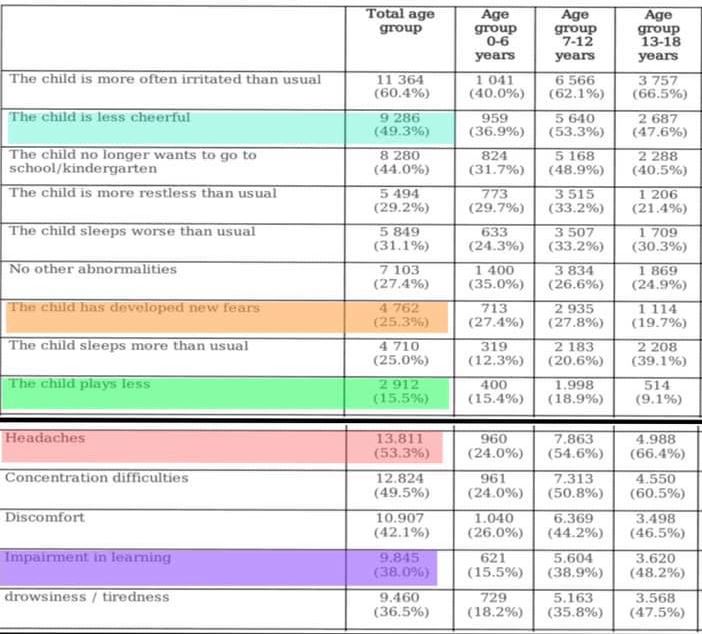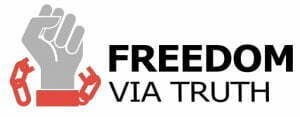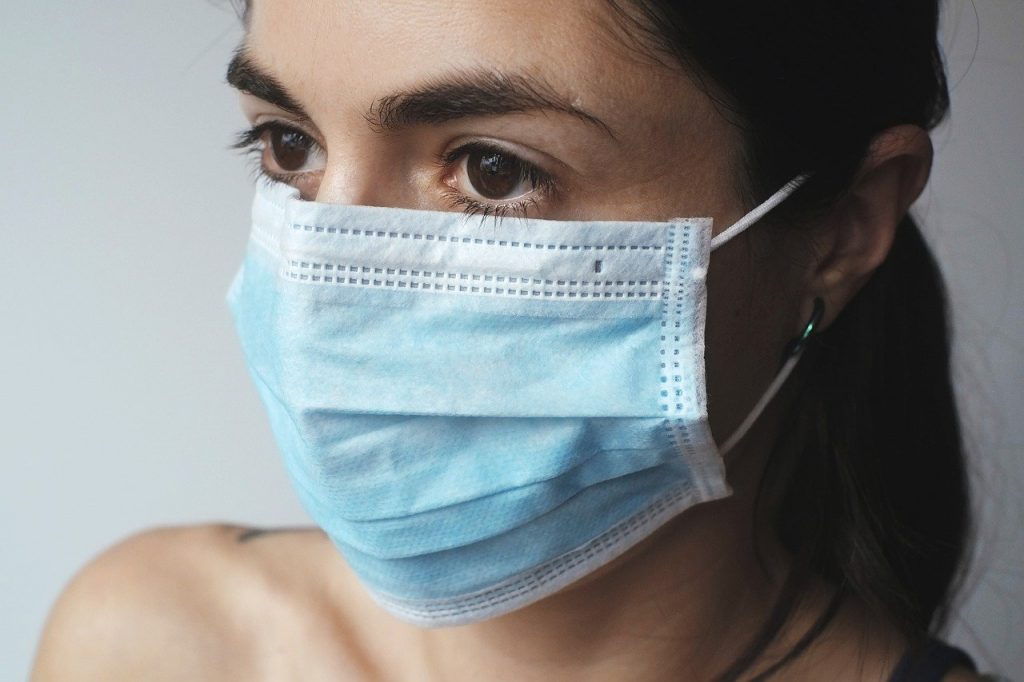First results of a Germany-wide registry on mouth and nose covering (mask) in children
Abstract
Background: Narratives about complaints in children and adolescents caused by wearing a mask are accumulating. There is, to date, no registry for side effects of masks.
Methods: At the University of Witten/Herdecke an online registry has been set up where parents, doctors, pedagogues and others can enter their observations. On 20.10.2020, 363 doctors were asked to make entries and to make parents and teachers aware of the registry.
Results: By 26.10.2020 the registry had been used by 20,353 people. In this publication we report the results from the parents, who entered data on a total of 25,930 children. The average wearing time of the mask was 270 minutes per day. Impairments caused by wearing the mask were reported by 68% of the parents. These included irritability (60%), headache (53%), di culty concentrating (50%), less happiness (49%), reluctance to go to school/kindergarten (44%), malaise (42%) impaired learning (38%) and drowsiness or fatigue (37%).
Discussion: This world’s rst registry for recording the effects of wearing masks in children is dedicated to a new research question. The frequency of the registry’s use and the spectrum of symptoms registered indicate the importance of the topic and call for representative surveys, randomized controlled trials with various masks and a renewed risk being assessment for the vulnerable group of children: adults need to collectively react the circumstances under which they would be willing to take a residual risk upon themselves in favor of enabling children to have a higher quality of life without having to wear a mask.
Background And Questions
The question of a certicate of exemption from the obligation to wear a mouth and nose cover (hereinafter referred to as “mask”) is a new phenomenon in pediatric practice. Parents, educators and doctors are increasingly reporting problems and health complaints in children in connection with wearing a mask. There are no manufacturer-independent studies on the use of masks for children and adolescents that are certified as medical products for occupational safety in professional applications. In addition, due to the unknown materials used, there are no findings on the potential protective effects or side effects of the often home-made “everyday masks” worn by the majority of children. In view of the ongoing measures to contain the COVID-19 pandemic, and in particular the varying obligations for children and adolescents to wear masks in school over a longer period of time, there is an urgent need for research.
Study Design And Research Methods
Based on the registry of adverse drug reactions at the Paul Ehrlich Institute (www.nebenwirkungen.pei.de), an online registry has been set up where parents, doctors, educators and others can enter their observations on the effects of wearing a mask on children and adolescents. On 20.10.2020, 363 doctors on the Co-Ki study distribution list were informed about the possibility of making entries there themselves and to communicate the registry to their patients and colleagues. The registry and the questionnaire can be found online at www.co-ki-masken.de (Figure in Online Supplement S1) as part of the Co-Ki study complex ( gure in Online Supplement S2). The data entered in the registry includes information regarding the role of the registrant, demographic data, previous illnesses, situation and duration of mask wearing, type of mask, existence of complaints from the child about an impairment via the mask, symptoms, behavioral problems, personal attitude to corona protection measures of the government and the possibility to leave name and e-mail address. A positive ethics vote from the University of Witten/Herdecke was obtained.
Results
By the evening of 26.10.2020, one week after the registry went online, 20,353 people had already taken part in the survey, with 48,657 entries. Of the survey participants, 17,854 (87.7%) were parents, 736 (3.6%) were teachers, 352 (1.7%) were doctors, and 1,411 (6.9%) were “others” (Figure S3 in the Online Supplement shows the analysis set of the entries of the rst week). This article reports on the 17,854 entering parents with a total of 25,930 children and youth. The data of the entering doctors, teachers and other roles are published separately.
Of the 17,854 entering parents, 6,877 (38.5%) stated that they had a university degree (bachelor, master, master’s degree, diploma, state examination, doctorate), 671 (3.8%) had a master craftsman, 3,704 (20.7%) had completed an apprenticeship and 3,040 (17.0%) had a high school diploma (general
qualification for university entrance) or subject-related higher education entrance qualification or technical college entrance qualification. 2,509 (14.1%) of the participants stated that their highest educational level was a secondary school leaving certificate (In Germany: Mittlere Reife, Fachoberschulereife or similar), 327 participants (1.8%) had a secondary modern school leaving certificate, and 31 participants (0.2%) stated that they had no school or training qualification. The remaining did not enter an education. The participation of contributors per state corresponds to the distribution of the population (Figure 1).
The demographic situation of the children and previous illnesses among the children from the parents’ point of view are shown in Table 1: the genders are equally represented with a slight trend towards boys; and 55.6% of the children were between 7-12 years of age. In 79.4% of the children it was stated that they had no previous illnesses, 5.9% had asthma and 1.8% had another lung disease. Furthermore, there was the possibility of free text entries on other previous illnesses, which was used by 8.6%.






